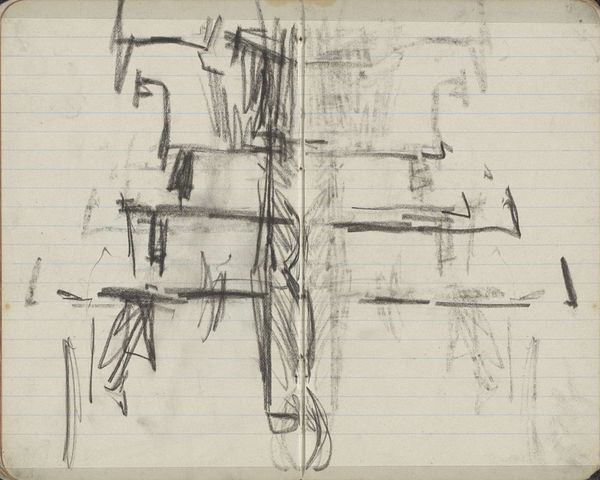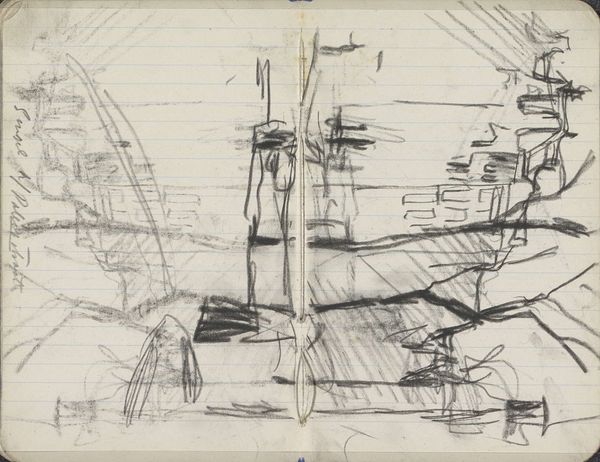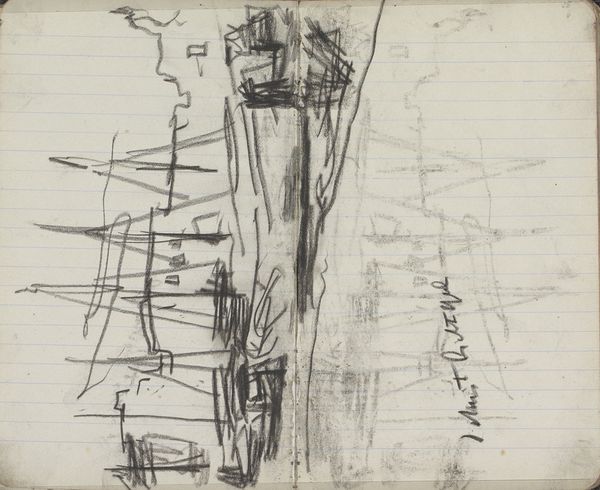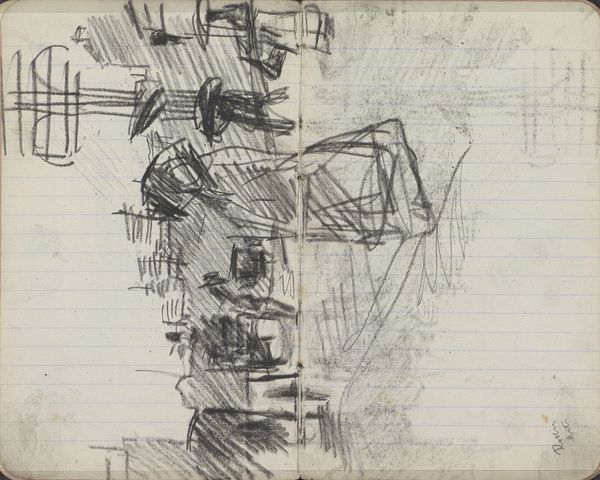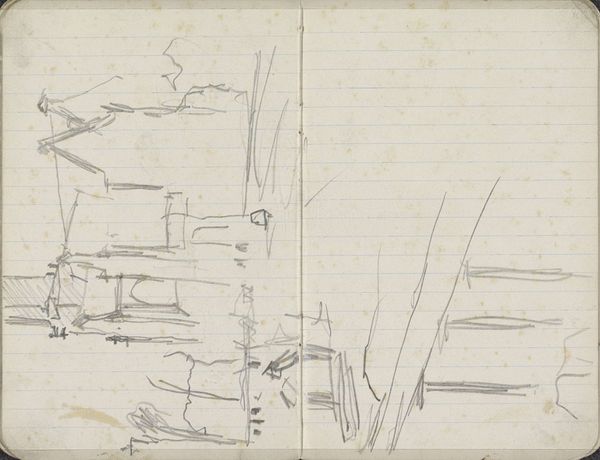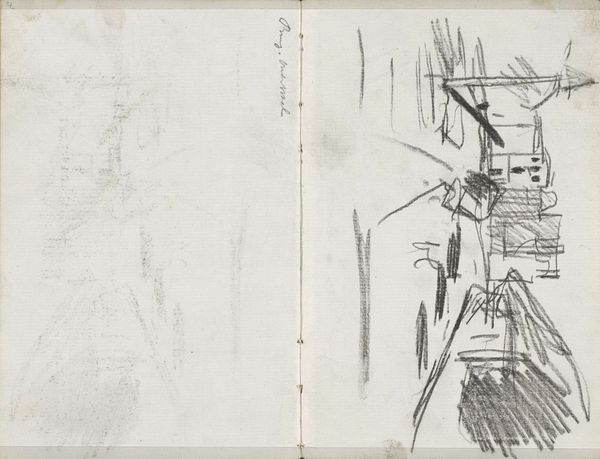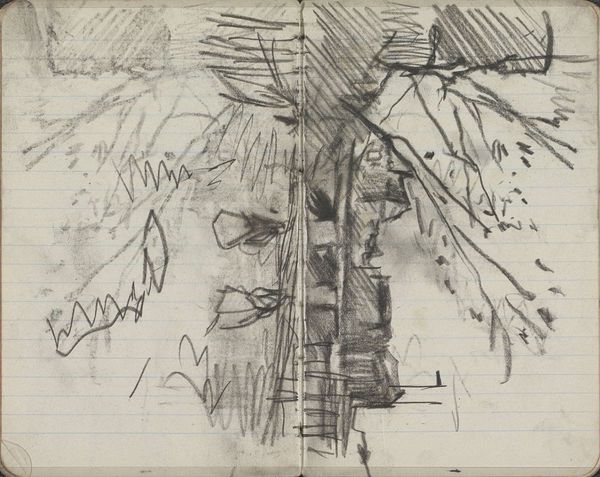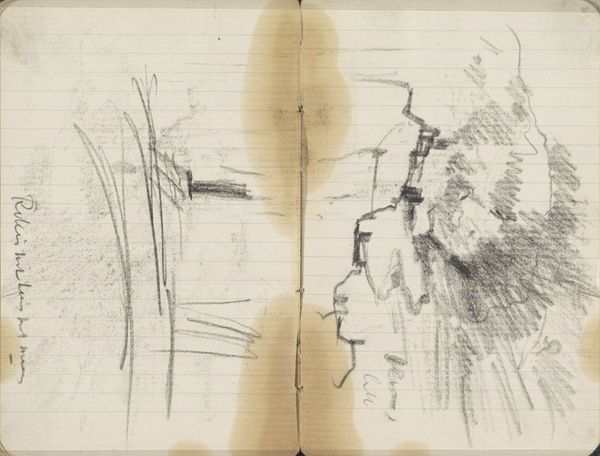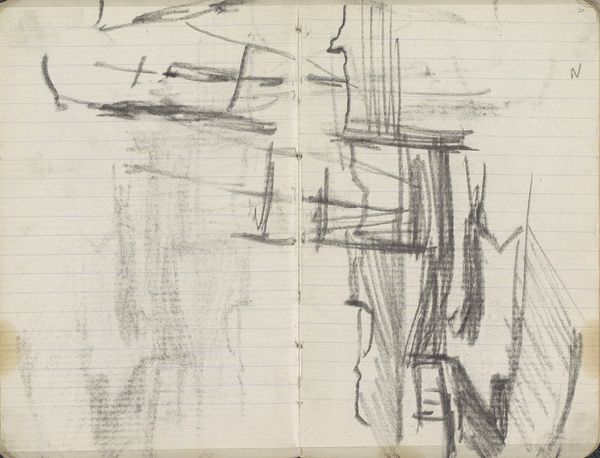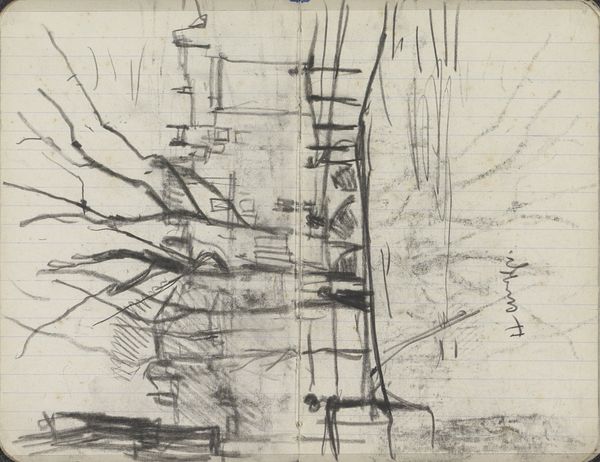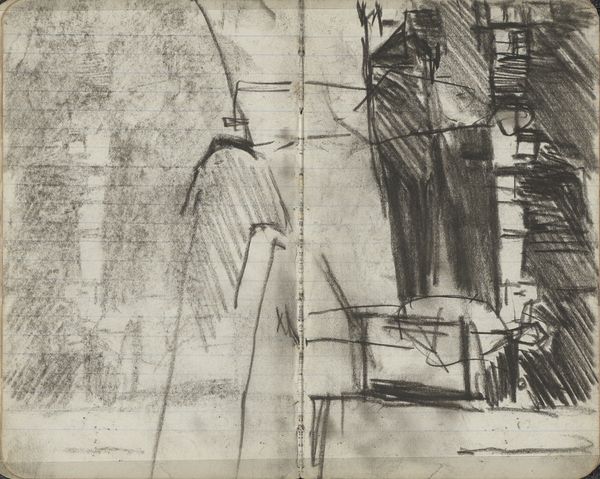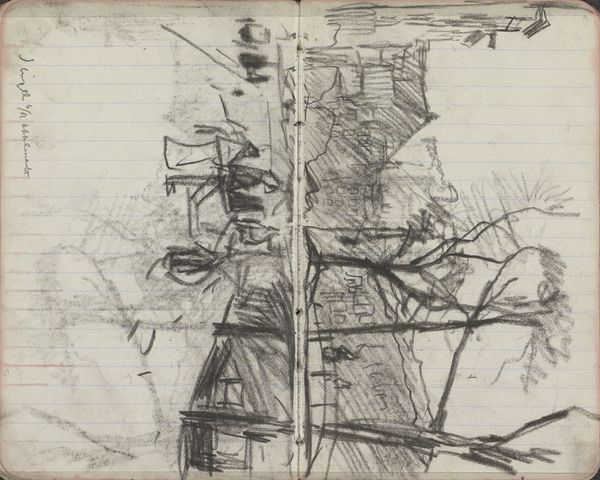
Gezicht op de Barentszkade te Amsterdam met heimaterieel 1896 - 1901
0:00
0:00
georgehendrikbreitner
Rijksmuseum
Copyright: Rijks Museum: Open Domain
Editor: This drawing, "Gezicht op de Barentszkade te Amsterdam met heimaterieel," by George Hendrik Breitner, created between 1896 and 1901, captures a scene in Amsterdam using pencil on paper. It feels very raw, almost like a fleeting impression jotted down in a notebook. What can you tell me about it? Curator: What I find immediately striking is the sketch's connection to the specific labor and industry of Amsterdam's waterfront at the turn of the century. Breitner's quick strokes document not just a scene, but the very means of production and transportation inherent to the port. The "heimaterieel," the piling equipment, wasn’t simply background; it was a signifier of Amsterdam's economic activity. Do you think the choice of a humble pencil and sketchbook format amplifies this sense of documenting labor? Editor: That's interesting! I hadn't really considered the significance of the materials themselves, I was mostly focusing on the aesthetic of the sketch. I see what you mean though – the disposable nature of the sketchbook almost implies it was made for utilitarian means rather than for display in an art gallery. How might this process relate to other art of this period? Curator: Absolutely. Consider the rise of industrial photography at the time. Artists and photographers were grappling with new ways of representing the changing urban landscape, marked by factories, workers, and infrastructural development. Breitner’s sketch could be viewed as a more intimate, hand-produced response to those same societal shifts. Perhaps he intended to highlight the humanity inherent in manual labor that photography couldn't capture? Editor: I guess seeing the artist’s hand so present changes how we interpret the image, focusing us on labor itself! I came in thinking it was simply a street sketch, but understanding the context of labor helps me to see it very differently now. Curator: Exactly. Breitner encourages us to reflect on the material conditions of both the artwork and the city itself. It blurs the lines between "high art" and everyday life, shifting our focus to the processes and social implications behind the image.
Comments
No comments
Be the first to comment and join the conversation on the ultimate creative platform.
